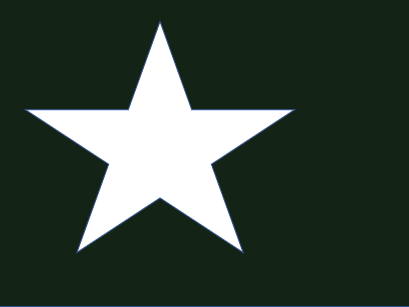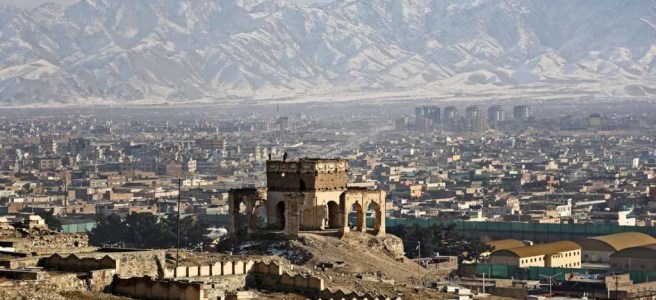The Taliban in Afghanistan have engaged the United States, the sole superpower after the fall of the Soviet Union, for nearly two decades. The two have been locked in battle ever since the United States and its allies invaded Afghanistan in the aftermath of the September 11 attacks. However, their origins have either been shrouded in mystery, or cloaked in disinformation.
In April 1992, Afghan President Najibullah, former head of Afghan Intelligence KHAD, was overthrown. [1] He was backed by the Soviet Union after their departure in 1989, both financially and politically. In January 1992, after the fall of the Soviet Union, this aid was discontinued. Kabul fell, not to the well-armed Pashtun parties based in Pakistan, but to the organized and united Tajik and Uzbek forces of Rabbani, Masud & Dostum.
For the first time in three hundred years the Pashtun had lost control of Kabul. Afghanistan plunged into a state of virtual disintegration with the economy in tatters and the country divided into warlord fiefdoms. Warlords and bandits plundered the population at will, seized homes & farms and threw out their occupants. Commanders kidnapped young girls and boys for sexual pleasure, robbed merchants and brawled on the streets. [1]
Instead of refugees returning from Pakistan, a fresh wave of refugees began to leave. This went on for two years and serves as a prelude to the rise of Mullah Omar. Omar was a veteran of the Afghan-Soviet war and was among the many teachers at religious seminaries who had joined the legions of those fighting the Soviet invasion. None of them, however, fought under a monolithic group called Taliban.
In 1994, locals of Singesar went to Mullah Omar and complained that a local commander had abducted two girls, shaved their heads and raped them in their camp.[2]
Omar took thirty of his students (hence the name ‘Taliban’ which in Arabic roughly means ‘Group of students’) and attacked their base, freed the girls and hanged the commander from the barrel of a tank. Public appeals started coming in for Mullah Omar to help them against repressive warlords, increasing his clout.[2]
Omar’s influence grew rapidly. In particular this was because he was not taking any reward or credit and had only asked people to follow him to setup an Islamic system. [3] Omar’s emissaries visited Kabul where President Rabbani wished to support any Pashtun that would oppose Gulbuddin Hikmatyar. Rabbani promised to help Omar with funds if they opposed Hikmatyar, who was shelling Kabul without interruption. [3]
Transport and smuggling mafia also donated money to Mullah Omar to clear the roads off bandits and guarantee security for their trucks. [3][4]
In October 1994, some two hundred Taliban from Kandahar attacked Spin Boldak and routed Hikmatyar’s men holding the border post with Pakistan. Taliban also captured a large arms dump that had been guarded by Hikmatyar’s men.
Meanwhile, Pakistan’s Prime Minister Benazir Bhutto was keen to open a trade route to Central Asia and met Afghan warlords Dostum and Ismael Khan urging them to open a southern route. Benazir Bhutto’s interior minister, Naseerullah Babar, took six ambassadors to Kandahar and Herat to meet warlords to allow trade traffic, without informing the Kabul government. [4]
Babar sent thirty trucks to Ashkabad, but the trucks were held up by Afghan
commanders Amir Lalai, Mansur Achakzai and Ustad Halim just outside Kandahar. Consequently, Benazir’s government requested the Taliban to free the convoy. They obliged and attacked those holding the convoy, killing commander Mansur Achakzai. [4]
Taliban continued their charge and moved into Kandahar and routed Mullah Naquib who commanded twenty-five hundred men. This was Afghanistan’s second largest city. Benazir’s interior minister Babar took credit for Taliban’s success, telling journalists that they are ‘our boys’. [5]
Benazir Bhutto, however, denied supporting the Taliban. Later on, she said Pakistan could not stop new recruits from crossing the border to join the insurgents. [6] Whilst in exile, Benazir called them ‘her children who had gone astray’. [7]
After capturing Kandahar, Taliban moved to the north and captured Urozgan and Zabul provinces without firing a single shot. By January 1995, they captured Helmand province after fierce resistance.
Even though Benazir Bhutto’s government politically backed the Taliban, they were skeptical of the Taliban’s abilities and continued to back Hikmatyar against Rabbani government. [8] By February 1995, the Taliban came close to Kabul and captured Hikmatyar’s headquarters at Charasyab, forcing his forces to flee towards Jalalabad.
Taliban then demanded Rabbani’s resignation and his Defence Minister Masud’s surrender with some other inflexible demands. These were rejected and Masud’s next move was to launch a blitzkrieg against the forces of Shia Hazaras (supported by Iran) driving them out of Kabul’s southern suburb. [9] In desperation, Hazaras cut a deal with the Taliban, yielding their weapons & position. Masud was not going to allow the Taliban to replace the Hazaras in southern Kabul, therefore he launched an attack on them and
after bloody street fighting pushed them out of Kabul.
After the defeat Taliban turned their attention to western Afghanistan in a bid to capture Herat and faced fierce resistance at Shindand from Ismael Khan’s forces, supported by Kabul regime with two thousand battle-hardened Tajik fighters. By the end of March 1995, after facing heavy casualties, Taliban were pushed out of Shindand.
Ismael Khan made a military miscalculation and launched an ill-prepared and badly timed offensive assuming Taliban to be on the verge of disintegration after their recent defeats. Taliban, however, regrouped and counter-attacked the overstretched forces of Ismael Khan, routing them comprehensively.
By September 1995, Ismael Khan had abandoned Herat and had fled to Iran. Taliban then laid a ten-month unsuccessful siege of Kabul. As casualties of the Taliban mounted, moderates in the movement openly talked of the need for negotiations with the Kabul regime while hardliners opposed the idea.
In March 1996, twelve hundred Pashtun religious leaders gathered in Kandahar, summoned by Mullah Omar to legitimize his leadership. On 4 th of April 1996, Mullah Omar appeared on the roof top wrapped in the cloak of Prophet Muhammad (PBUH) and became ‘Amir-ul Momineen’ (Commander of the Believers).
Meanwhile, President Rabbani tried to woo opposition leaders and warlords and increase his government’s international standing. Iran, India and Russia backed Kabul regime and stepped up military aid to them. [10] Iran developed an air bridge from Mashhad in eastern Iran to Bagram in Afghanistan, where it flew in arms supplies.
Iran had also set up five training camps near Mashhad for some five thousand fighters led by the former Herat governor Ismael Khan. India helped refurbish the Afghanistan National Airline to provide the regime with a reliable arms carrier. India also provided aircraft parts, new ground radars and money.
Pakistan was worried by Rabbani’s success and attempted to woo warlords to join the Taliban. Hence Hikmatyar, Dostum, Jalalabadi Shura and Hizb-e-Wahadat met Pakistani President Farooq Leghari and Chief of Army Staff Jahangir Karamat in Islamabad but the Taliban declined the Pakistan-proposed alliance despite personal appeals by Benazir Bhutto’s Interior Minister and government ally Maulana Fazl-ur-Rehman. [10]
Taliban kept rocketing Kabul unceasingly and tried to break Masud’s line without any success. In August 1996, Taliban launched a surprise offensive on Jalalabad. The panic-stricken Jalalabad Shura fell apart and Jalalabad fell to the Taliban. Within the next few days Taliban captured the three eastern provinces of Nangarhar, Laghman and Kunar. They also captured the gateway to Kabul, Sarobi which was forty-five miles from Kabul. They then moved onto Kabul from the East and South. The lightning attack, which came from several directions, stunned the Kabul government. On 26th September 1996, the Taliban entered Kabul. Their first bloodiest act was to find former President Najibullah in the United Nations headquarters and hang him in public.
References:
[1] Ahmed Rashid, “Taliban: Militant Islam, Oil and Fundamentalism in Central Asia”, pp. 21
[2] Ibid pp. 25
[3] Ibid pp. 26
[4] Ibid pp.27
[5] Shuja Nawaz, “Crossed Swords: Pakistan, Its Army, and the Wars Within”, pp. 479
[6] Ahmed Rashid, “Taliban: Militant Islam, Oil and Fundamentalism in Central Asia”, pp. 28
[7] M. Asghar Khan, “We’ve Learnt Nothing from History”, pp. 197
[8] Ahmed Rashid, “Taliban: Militant Islam, Oil and Fundamentalism in Central Asia”, pp. 34
[9] Ibid pp. 35
[10] Ibid pg. 44
About the Author
Umar is a Telecom Engineer with an interest in history & geopolitics. He tweets at @umar8528

